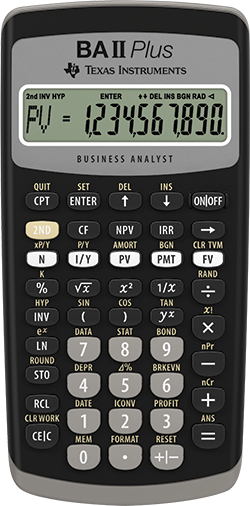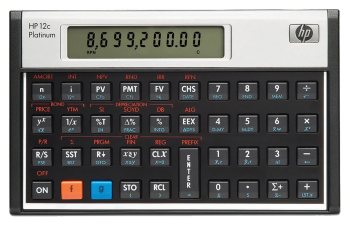- Extensive financial functions
- Widely recognized and trusted
- Durable and comfortable design
- Highly reliable and precise
- RPN system for fast data entry
- Durable and long-lasting
- Single-line display
- Not ideal for complex statistical analysis
- Single-line display
- Steeper learning curve for RPN system
Texas Instruments BA II Plus vs HP 12C Platinum
In the realm of financial calculations, two products stand out among the rest: the Texas Instruments BA II Plus and the HP 12C Platinum. Both are renowned financial calculators that have been staples in the industry for decades, widely used by professionals, students, and individuals alike for their robust functionality and reliability.
Design and Build
The Texas Instruments BA II Plus features a sleek and compact design, weighing in at approximately 4.8 ounces and measuring 5.5 inches in length. Its keyboard layout is intuitive, with clearly labeled buttons and a prominent display screen that shows up to 10 digits. The calculator's battery life is impressive, with a single set of four AAA batteries lasting up to one year.
In contrast, the HP 12C Platinum boasts a more premium design, with a stainless steel backplate and a weight of around 6 ounces. Its dimensions are slightly larger than the BA II Plus, measuring 5.9 inches in length. The keyboard layout is also well-organized, with a focus on RPN (Reverse Polish Notation) input methodology, which may take some time for users to get accustomed to. The HP 12C Platinum's battery life is equally impressive, with a single set of three AAA batteries lasting up to nine years.
Financial Calculations
Both financial calculators excel in performing complex financial calculations, including time value of money (TVM) calculations, amortization schedules, and cash flow analysis. However, the HP 12C Platinum has an edge when it comes to advanced financial functions, such as bond valuation, option pricing, and statistical analysis. Its RPN input methodology also allows for more efficient calculation of complex formulas.
The Texas Instruments BA II Plus, on the other hand, is more geared towards basic financial calculations, with a focus on TVM, amortization, and breakeven analysis. While it may not offer the same level of advanced functionality as the HP 12C Platinum, its ease of use and intuitive interface make it an excellent choice for students and professionals who need to perform straightforward financial calculations.
Programming and Memory
The HP 12C Platinum has a significant advantage when it comes to programming and memory. It features a built-in programming language that allows users to create custom formulas and store them in the calculator's memory. The calculator also has a generous 400-program-step capacity, making it an ideal choice for complex financial modeling and simulations.
In contrast, the Texas Instruments BA II Plus has limited programming capabilities, with only basic formula storage and recall functionality. While it does have a decent amount of memory (10 formulas), it pales in comparison to the HP 12C Platinum's expansive programming capabilities.
Conclusion
In conclusion, both the Texas Instruments BA II Plus and the HP 12C Platinum are exceptional financial calculators that cater to different needs and preferences. The BA II Plus is an excellent choice for those who require a straightforward, easy-to-use calculator for basic financial calculations, while the HP 12C Platinum is geared towards advanced users who need to perform complex financial modeling and simulations.
Ultimately, the choice between these two financial calculators depends on your specific requirements and level of expertise. If you're a student or professional looking for a reliable and user-friendly calculator for everyday financial calculations, the Texas Instruments BA II Plus may be the better option. However, if you're an advanced user who requires a high-level of functionality and programming capabilities, the HP 12C Platinum is the clear winner.































